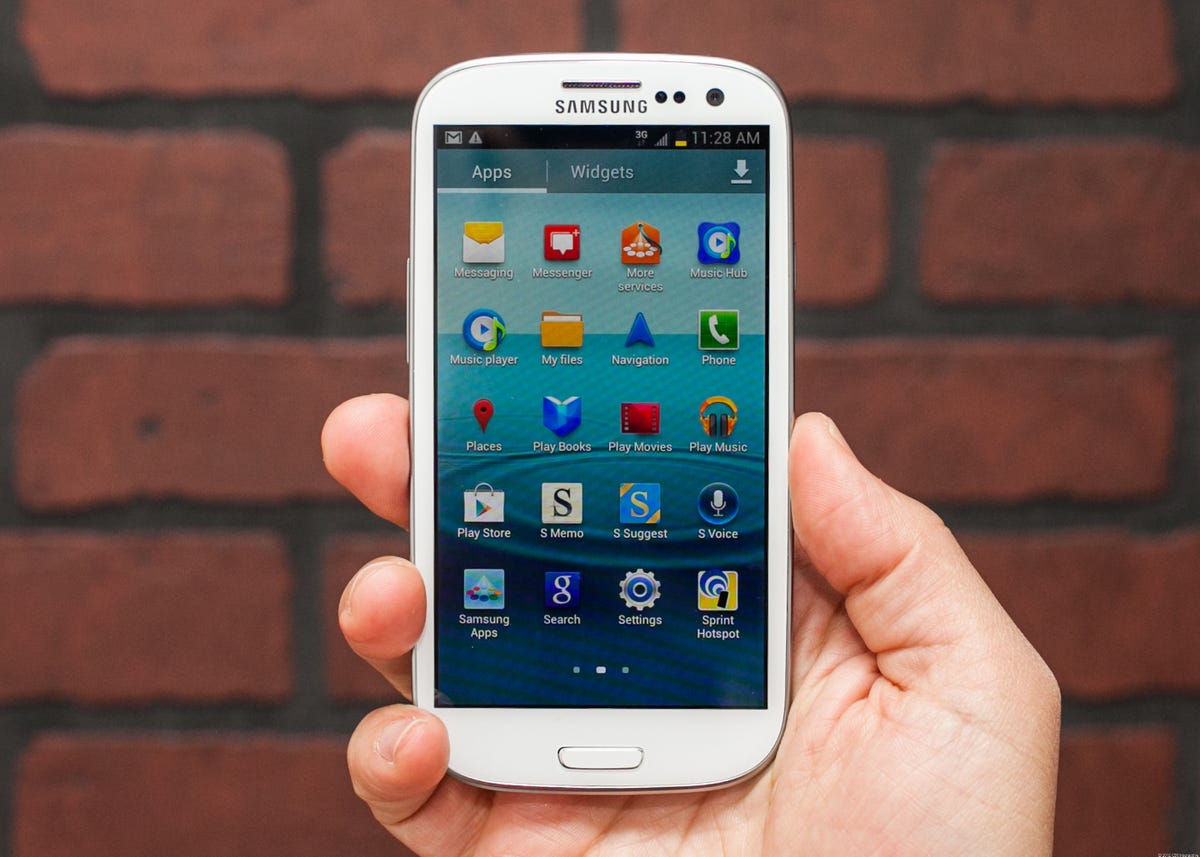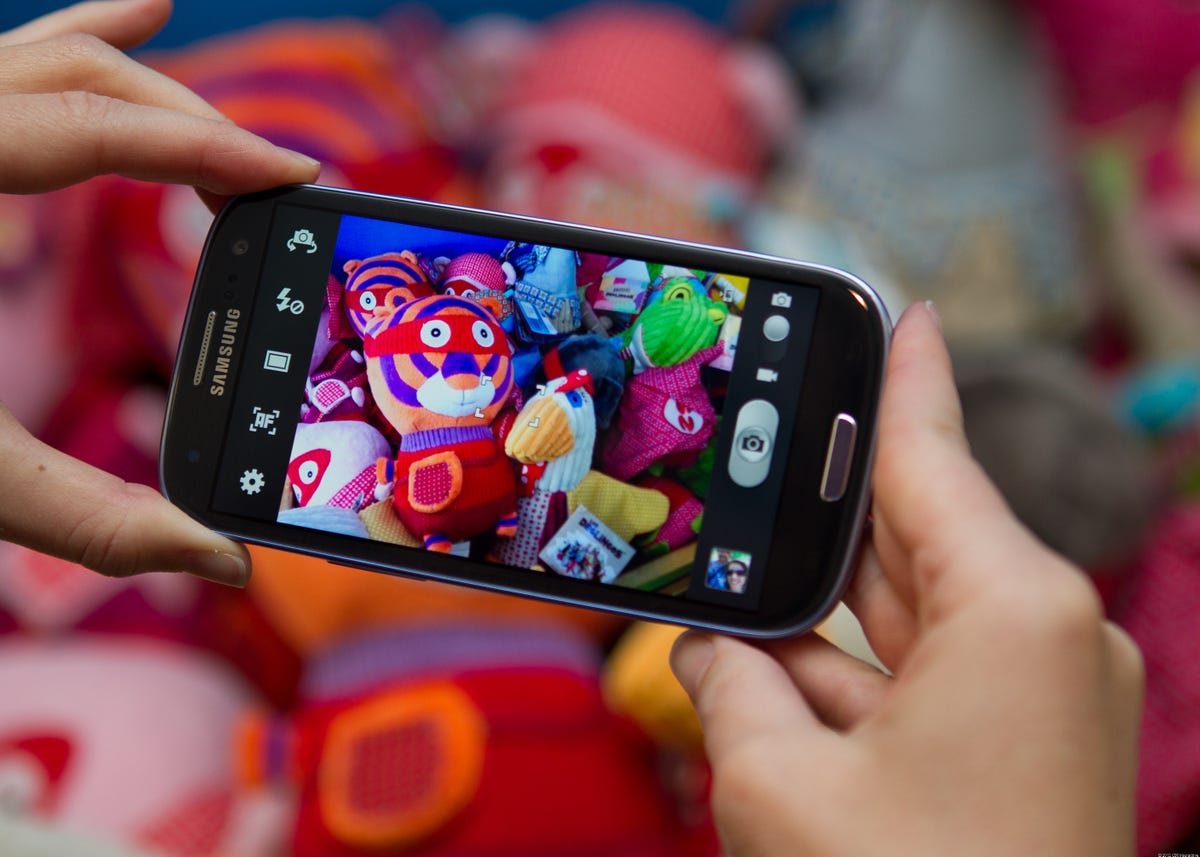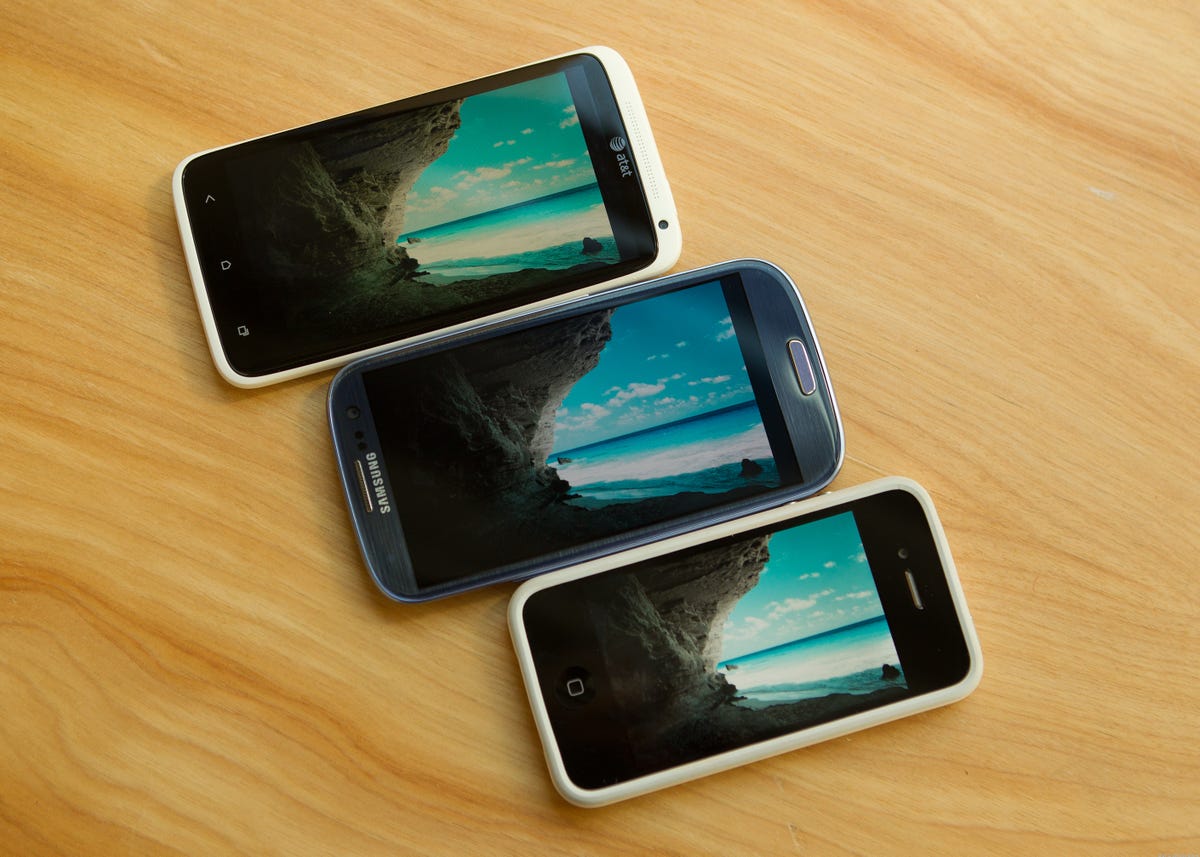Over the last four weeks, I’ve reviewed the Samsung Galaxy S III (GS3) on four different carriers, thoroughly tested its camera, and dove into its beaming and voice search features. Suffice it to say, I feel like I know the phone pretty well.
The blue T-Mobile version has been a constant companion for over a month, and in between the Android 4.1 Jelly Bean release on Google’s I/O-issued Galaxy Nexus and other handset reviews, I’ve tried to make the GS3 my primary phone. On the whole, it has performed reliably whenever I need it, and I still love the experience of picking up its unabashedly glossy form and using it. (I’ve also come to prefer the blue hue over the white, but am withholding final judgment until I get my greedy hands on AT&T’s red shade.)
Up close and personal with the Samsung Galaxy S3 (pictures)






Everyone uses phones differently and values different features and functions over others, which is what makes my take on this highly subjective. For instance, in my leisure time, I use phones most for: e-mail, texting over Google Voice, taking photos, making calls (gasp!), and navigating. I also use it to wake me up, look up reviews and ratings, read the news, tweet, take notes, obsessively check the weather, buy stuff, and do some banking.
I’m not a huge smartphone e-book reader or gamer (I prefer tablets for multimedia when I’m on trips), I don’t tend root and re-ROM, I rarely use a Bluetooth headset, and I don’t usually stream or play back podcasts or music unless I’m on a road trip — so I didn’t really use these features in my everyday life. Since not many other people had the GS3, I didn’t have many opportunities to test out photo-sharing in the wild.


Sarah Tew/CNET
What works
Here are my picks for the GS3’s best traits.
Internet-dependent tasks: So long as I have a strong data or Wi-Fi connection, most of what I do on a smartphone worked like gravy. I rely on a phone for mapping and transportation guidance, and for looking up restaurant ratings. I was able to quickly purchase Amazon products when I needed them, pay my bills, and communicate via Google Voice. Of course, the data speeds differ by carrier
Calling: The phone’s call quality was good enough that I could pick up a phone to call a business, family, or friends, and the onscreen volume boost control usually fixed the problem of a modestly high maximum audio.
Camera: I have total confidence that the GS3’s speedy 8-megapixel camera will take a good photo that I’ll be able to upload or share. Photos generally come out crisp and colorful, without many flaws. Sure, there are the shots that other excellent cameras could reproduce a smidge better, but in general, I’m happy having the GS3 in-hand for my casual photography needs.
Related stories
- Samsung Galaxy S3 review
- Samsung Galaxy S3 camera shootout vs. HTC One X, iPhone 4S
- Apple’s Siri trounces S Voice
- iPhone 5 vs Galaxy S3: Wait or buy now?
Home button: It’s a little narrow for my tastes, but it worked intuitively. I like its triple functionality to go home, pull up recent apps, and launch S Voice.
Battery: CNET’s battery drain tests (we did three) clocked the talk time at 7.8 hours (and once at 9 hours!). How long your battery chugs along is entirely dependent on your screen settings and on how heavily you use the device. Some days I used it more moderately than others, but I’d call it average-to-good in what I expect out of a phone before having to charge it up again. Most heavy users will need to charge once per day.
Alarm: Strange as it may sound, I’m a big fan of Samsung’s smart alarm, which gradually increases the wake-up tone volume over the course of a few minutes. It isn’t new to the Galaxy S3, but it’s nice for those of us who prefer to ease into wakefulness.
S Beam: With S Beam, Samsung got a head start on the Android Beam capabilities that Google is bundling into Android 4.1 Jelly Bean. S Beam uses NFC and Wi-Fi direct to share larger format information like photos and videos, in addition to URLs, maps, contact info, and links to the Google Play store.
I actually did use S Beam (well, Android Beam) a few times in the wild to share URLs. One of those times was to share an article written by my colleague Maggie Reardon, with a Google I/O attendee we met in line there at Google’s annual conference, who also had an NFC-capable Android phone. Fitting, right?


Josh Miller/CNET
Not so much
Big and small, these were my least favorite of the of the Galaxy S3’s characteristics.
Reflection: Although I personally like the GS3’s design, it certainly doesn’t have the premium craftsmanship of some of its rivals. The plastic doesn’t bother me too much, since it also cuts down the phone’s weight, but the high gloss does sometimes get in the way. The phone screen is extremely reflective, and so is the rest of the body. Sometimes my eyes grew tired of the sheen and of seeing my surroundings reflected back at me.
Screen brightness: The screen is also dimmer and less sharp than others — the brightness ceiling was a problem when trying to read the screen in bright sunlight. You can read more about screen resolution, brightness, and reflection here.
Menu button: Outfitted with the TouchWiz interface, the GS3 looks very much like a Samsung smartphone. Sammy did alter TouchWiz to make it look more like Google’s stock Android 4.0 Ince Cream Sandwich, but the GS3 still uses its old menu button rather than Google’s new vision. I’m ready for a little change.
Pop-ups: Samsung stuffs an impressive number of software extras into TouchWiz. On the GS3, as with other Samsung phones, I often feel choked by the user tips that teach you how to use all the new features. While I’m all for educating users on tools in theory, I sure got sick of dismissing all those motion control pop-ups. And I do not use over half of the motion controls.


Josh Miller/CNET
S Voice: Poor Samsung. Its engineers clearly sweated and strained to complete its S Voice actions app in time to make it onto the Galaxy S3, but unfortunately, Google’s Voice Actions and Apple’s Siri work much better, especially the redesigned version for Android 4.1 Jelly Bean. After too many bungled attempts, I flat-out stopped searching with my voice.
S Memo: I’m a lifelong list-maker, and S Memo’s more-creative intentions didn’t work well for my basic needs. Typing text onto a notepad was no problem, but it was hard to identify several of these nearly identical-looking notes from the app’s overview screen.
AccuWeather widget: Of course you can delete the widget or customize the settings, but I’m of the opinion that your preinstalled weather widget should automatically update the weather multiple times per day. Otherwise, it’s 3 p.m. on a warm summer’s day and you’re wondering why your phone is telling you it’s still 57 degrees outside.
Should you buy it or wait for something ‘better’?
If you’re strongly considering the GS3, I say yes, go ahead and buy it. I have my minor complaints about the handset, but I still strongly back the Galaxy S3 as one of today’s top smartphones. The top-shelf specs are all there, and the phone performs where it counts. It’ll take you a little time to set up the phone exactly the way you like it, but I do like that Samsung lets you customize the heck out of the Galaxy S3 without rooting it — from giving you control over the lock screen icons to the ton of motion control settings that you may appreciate more fully than I do.
The question of buying now or waiting for other phones is a popular one among CNET readers. My colleague Lynn La and I have looked into this question vis a vis the upcoming iPhone 5 (incidentally, so has CNET’s Maggie Reardon). We’ve also been asked if it’s better to buy the Galaxy Nexus with Android 4.1 Jelly Bean, or wait for a future Android handset.
None of us can tell you which phone you’ll personally like best, but I can offer some suggestions. The iPhone 5 will likely have a stronger build quality and a sharper screen. The camera may have cool tricks, but the GS3’s shooter should still remain highly competitive. I prefer summoning Siri over S Voice today, and I expect that to remain the same with Siri for iOS 6 that’s due in fall.


Screenshot by Jessica Dolcourt/CNET
As for the Samsung Galaxy Nexus with Jelly Bean, that choice comes down to a few points. I enjoy the stock Android 4.0/4.1 look and the new voice search and Google Now features are intriguing and easy to use.
Samsung will keep its TouchWiz interface when incorporating Jelly Bean features. There’s also no telling exactly when the GS3 will receive its update and if it will replace S Voice with a version of Google Voice Actions; Samsung hasn’t made anything beyond vague references on this one, which is expected since Google has just open-sourced its Jelly Bean code.
I will say that I prefer almost every hardware element on the Galaxy S3 over the Galaxy Nexus, whose shining feature is its 4.x OS. It’s still a very good device that will take you where you need to go, it’s just more basic in most senses.
I’ve hopefully helped clear up some questions you’ve had about life with the Galaxy S3, or at least my life with the phone. Please feel free to add your own thoughts in the comments section below.


Now playing:
Watch this:
Samsung’s Galaxy S III has all the right moves
5:56



